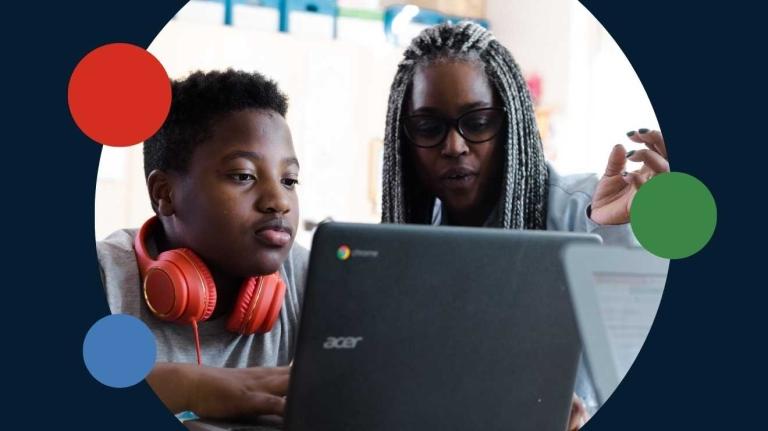To build an efficient and effective edtech ecosystem, district leaders must be intentional in their decision making. The number of digital tools in a given district’s portfolio has grown exponentially in the past few years, and leaders need systems in place to make connections between needs, digital learning solutions, and actual impact on teaching and learning. Evidence is key, but how do you start building and streamlining processes to make informed decisions?
1. Open the lines of communication early.
It is critical to have conversations about topics such as interoperability, data privacy, cybersecurity and bandwidth alongside discussions of tool effectiveness. Working to bridge the gap between teaching and learning, technology and budget teams helps ensure all student groups and teacher interests are represented.
Tips to get started:
-
Ask teams to present processes to one another.
-
Ask teams to share both easy-to-understand concepts and more technical aspects of their work to build background knowledge and develop empathy.
-
Identify three or four areas that bridge the work of teams.
-
Identify areas where consensus can easily be built.
2. Think about how to implement tools for the right groups of students at the right times.
Not all tools are right for all students – a formal process for the review and selection of edtech saves time, money and advances student outcomes. Districts must validate their edtech program and tool choices to better support daily instruction.
Tips to get started:
-
Identify currently used programs and tools, and ensure teachers understand purpose and use.
-
Focus on the “why” and “what” behind a given tool when communicating with teachers.
-
Gather stories from teachers and students about the impact of edtech tools on learning outcomes.
-
Leverage engagement, cost and evidence data to reevaluate past decisions as they relate to current contexts.
3. Keep your focus on student learning.
This one probably goes without saying, but here are some key questions to keep in mind as you dive into this work:
-
Does this program or tool align to instruction and support teaching practices?
-
Is there evidence that use of this tool leads to desired outcomes?
Discussing the explicit learning goals supported by various programs and tools is key, as all decisions should depend on specific district needs and goals. Identify a few concise and simple goals that speak across groups, considering goals that can mature over time and support interoperability.
Keeping these three pieces in mind will keep your team on track as you work to build and grow your edtech ecosystem. We recently wrote a guide for doing this work that you can download here – it takes you step-by-step through the process of building an effective and sustainable edtech ecosystem.
If you’re interested in seeing how our team can help you with that work, schedule a demo with us today!
Related Content
 parent_engagement_blog.jpg
parent_engagement_blog.jpgBlogs
 genai_blog.jpg
genai_blog.jpgBlogs
 canvas_mobile_app_blog_thumbnail.jpg
canvas_mobile_app_blog_thumbnail.jpgBlogs
